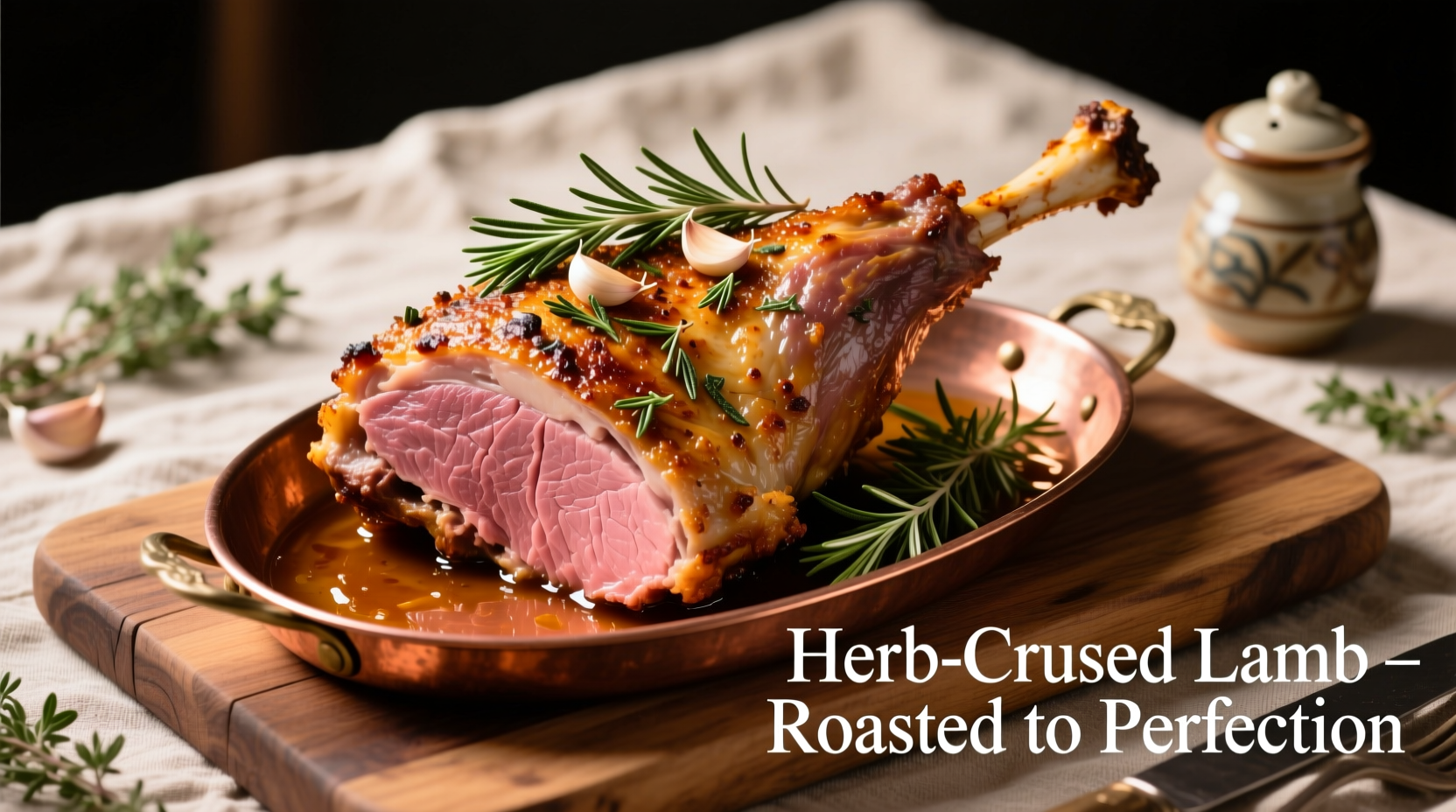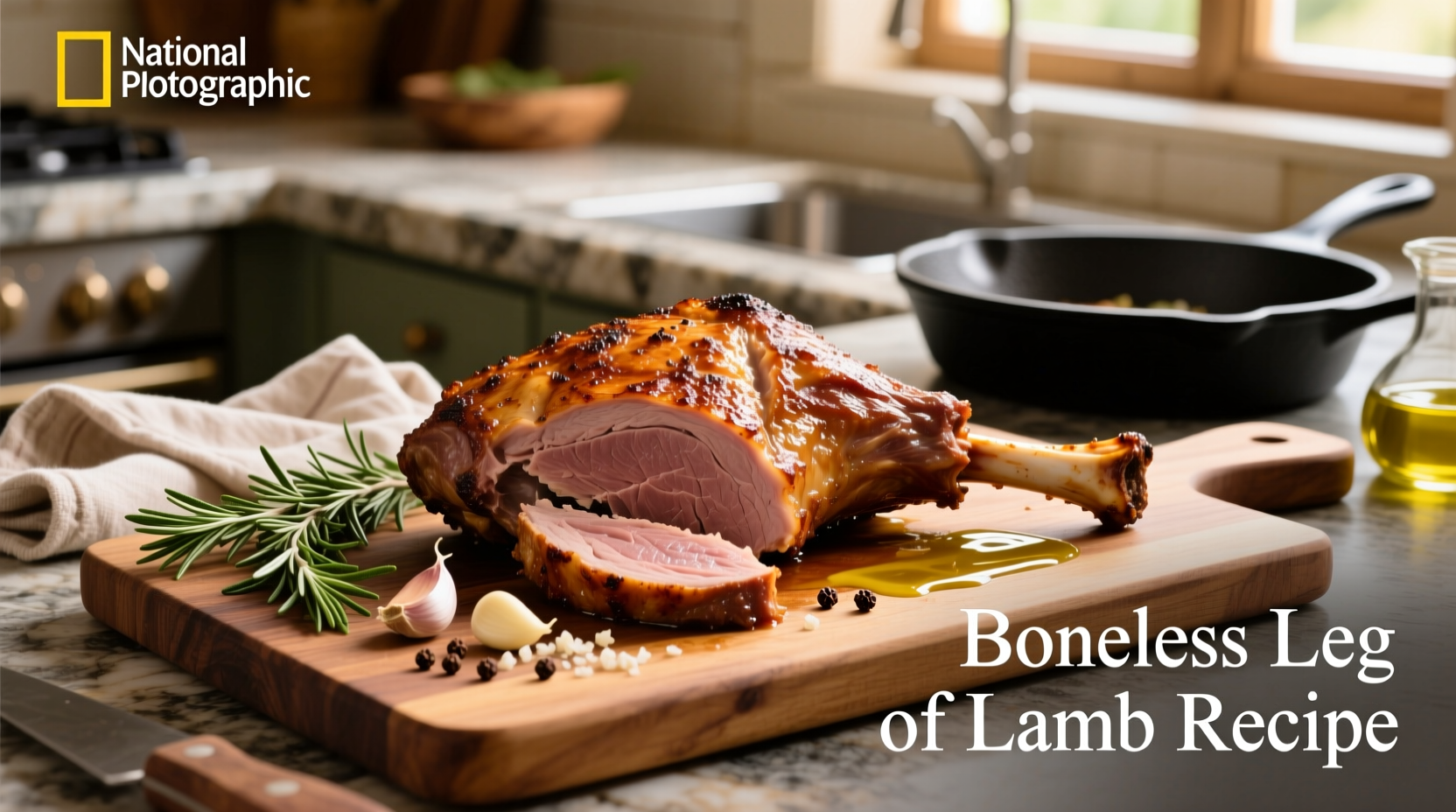Nothing impresses guests quite like a perfectly cooked boneless leg of lamb. As a former Michelin-starred chef who's prepared this cut hundreds of times, I've refined a foolproof method that delivers restaurant-quality results in your home kitchen. This comprehensive guide walks you through every critical step, from selecting the right cut to achieving that perfect medium-rare doneness that makes boneless leg of lamb truly shine.
Your Essential Boneless Leg of Lamb Roadmap
Before you start cooking, understand your journey: proper preparation prevents poor performance. This roadmap follows your actual cooking process, not just theoretical steps.
| Stage | Key Actions | Time Investment | Critical Success Factors |
|---|---|---|---|
| Preparation | Trimming, scoring, seasoning | 15 minutes | Even fat distribution, proper scoring depth |
| Cooking | Oven roasting, temperature monitoring | 1.5-2 hours | Precise internal temperature, consistent oven heat |
| Resting | Aluminum foil tent, waiting period | 15-20 minutes | Proper tenting, minimum rest time |
| Carving | Slicing against the grain, presentation | 10 minutes | Sharp knife, correct slicing angle |
Preparation: Setting Up for Success
Start with a quality boneless leg of lamb weighing 4-5 pounds—ideal for even cooking. Remove excess fat, leaving about 1/4 inch for flavor and moisture. Using a sharp knife, score the surface in a diamond pattern about 1/4 inch deep. This crucial step allows seasonings to penetrate and helps render fat properly during cooking.
For the perfect flavor foundation, combine 3 tablespoons olive oil, 4 minced garlic cloves, 2 tablespoons fresh rosemary, 1 tablespoon fresh thyme, 1 teaspoon kosher salt, and 1/2 teaspoon black pepper. Massage this mixture thoroughly into all surfaces, including the scored areas. For deeper flavor development, refrigerate the seasoned lamb uncovered for 12-24 hours before cooking—this dry-brine technique significantly improves texture and taste.

Cooking Methods Compared: Oven Roasting vs. Slow Cooking
While several cooking methods exist for boneless leg of lamb, oven roasting delivers the best balance of flavor development and texture control for special occasions. Slow cooking produces tender results but lacks the desirable exterior crust that makes this cut exceptional.
The USDA Food Safety and Inspection Service recommends cooking lamb to a minimum internal temperature of 145°F (63°C) followed by a 3-minute rest for food safety. However, culinary professionals typically pull boneless leg of lamb at 130-135°F (54-57°C) for medium-rare, as the temperature continues rising during resting. This precision ensures optimal tenderness and flavor retention while maintaining safety standards.
Precision Temperature Guide for Perfect Doneness
Invest in a reliable instant-read thermometer—your most important tool for cooking boneless leg of lamb. Insert it into the thickest part, avoiding any pockets of fat. Here's the temperature roadmap:
- Rare: Remove at 120-125°F (49-52°C), final temp 125-130°F (52-54°C) after resting
- Medium-rare (recommended): Remove at 130-135°F (54-57°C), final temp 135-140°F (57-60°C)
- Medium: Remove at 140-145°F (60-63°C), final temp 145-150°F (63-66°C)
Cooking time varies based on oven accuracy and meat thickness, but generally allow 20 minutes per pound at 325°F (163°C). Never rely solely on time—always verify with a thermometer. For optimal results, place the lamb on a rack in a roasting pan to ensure even air circulation and prevent steaming.
The Critical Resting Period: Why You Can't Skip This Step
After removing your boneless leg of lamb from the oven, tent loosely with aluminum foil and rest for 15-20 minutes. This isn't just waiting time—it's essential for perfect results. During resting, juices redistribute throughout the meat, resulting in significantly more tender and moist slices. Cutting too soon causes precious juices to escape onto your cutting board rather than staying in the meat.
Professional chefs monitor the temperature during resting—the internal temperature typically rises 5-10 degrees. This carryover cooking means you must remove the lamb from the oven before reaching your target final temperature. For medium-rare, pull at 130-135°F (54-57°C) knowing it will reach 135-140°F (57-60°C) during resting.
Carving Like a Pro: Slicing for Maximum Tenderness
Use a long, sharp carving knife for clean cuts. Identify the direction of the muscle fibers (the grain) and slice perpendicular to them—about 1/4 to 1/2 inch thick. Cutting against the grain shortens the muscle fibers, making each bite noticeably more tender. Arrange slices slightly overlapping on a warm platter for elegant presentation.
For special occasions, consider the French trimming technique: scrape the narrow end clean of meat and fat to expose the bone tip for elegant presentation. While your cut is boneless, this technique creates a beautiful tapered end that enhances visual appeal.
Flavor Pairings That Elevate Your Dish
Boneless leg of lamb shines with classic Mediterranean accompaniments. Create a red wine reduction using Cabernet Sauvignon, shallots, and fresh herbs. Serve with roasted garlic mashed potatoes, haricots verts with lemon zest, and a side of mint jelly for traditional appeal. For contemporary twists, try a pomegranate molasses glaze or a chimichurri sauce with parsley, oregano, garlic, and red wine vinegar.
Avoid common mistakes that ruin otherwise perfect lamb: don't skip the resting period, don't cut too thick or too thin, and never serve straight from the oven. Temperature control separates good results from exceptional ones—invest in a quality thermometer and trust it over time estimates.
Troubleshooting Common Boneless Leg of Lamb Issues
Dry meat? You likely overcooked it or skipped resting. Pull at lower temperatures and respect the 15-minute minimum rest.
Tough texture? The meat may have been sliced with (not against) the grain, or cooked at too high a temperature causing proteins to seize.
Bland flavor? Insufficient seasoning or lack of resting time for flavors to develop. Try the 24-hour uncovered refrigeration method for deeper flavor penetration.











 浙公网安备
33010002000092号
浙公网安备
33010002000092号 浙B2-20120091-4
浙B2-20120091-4